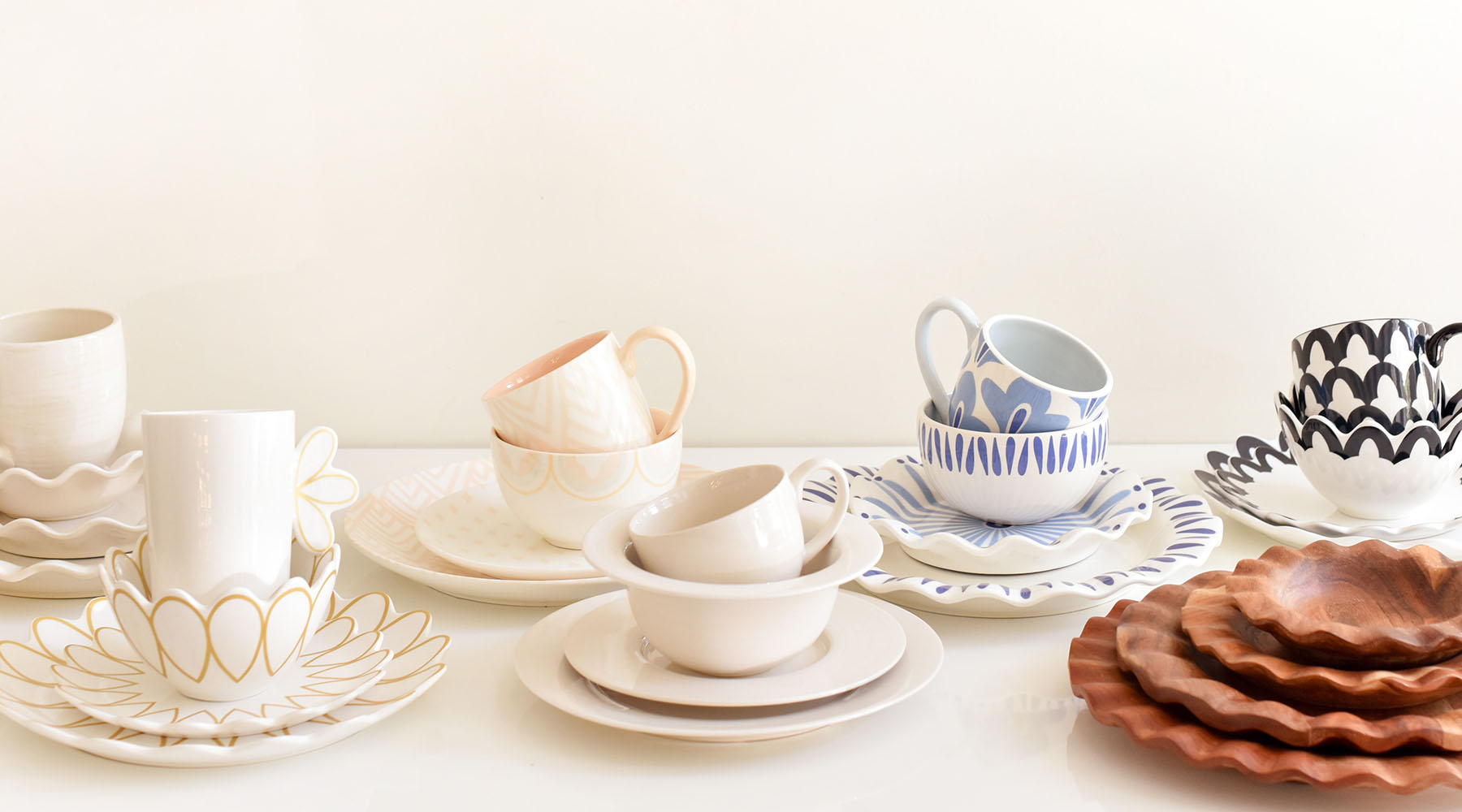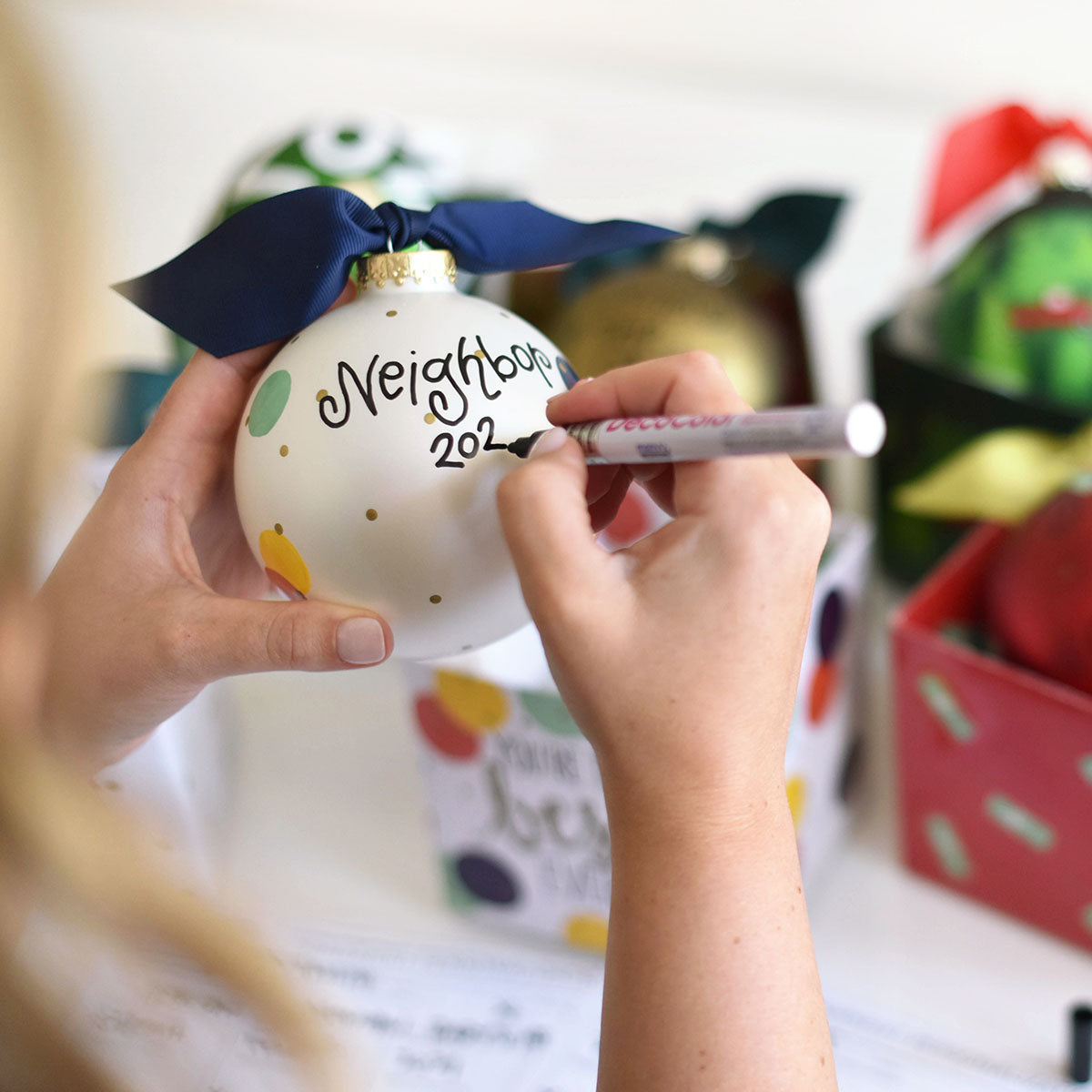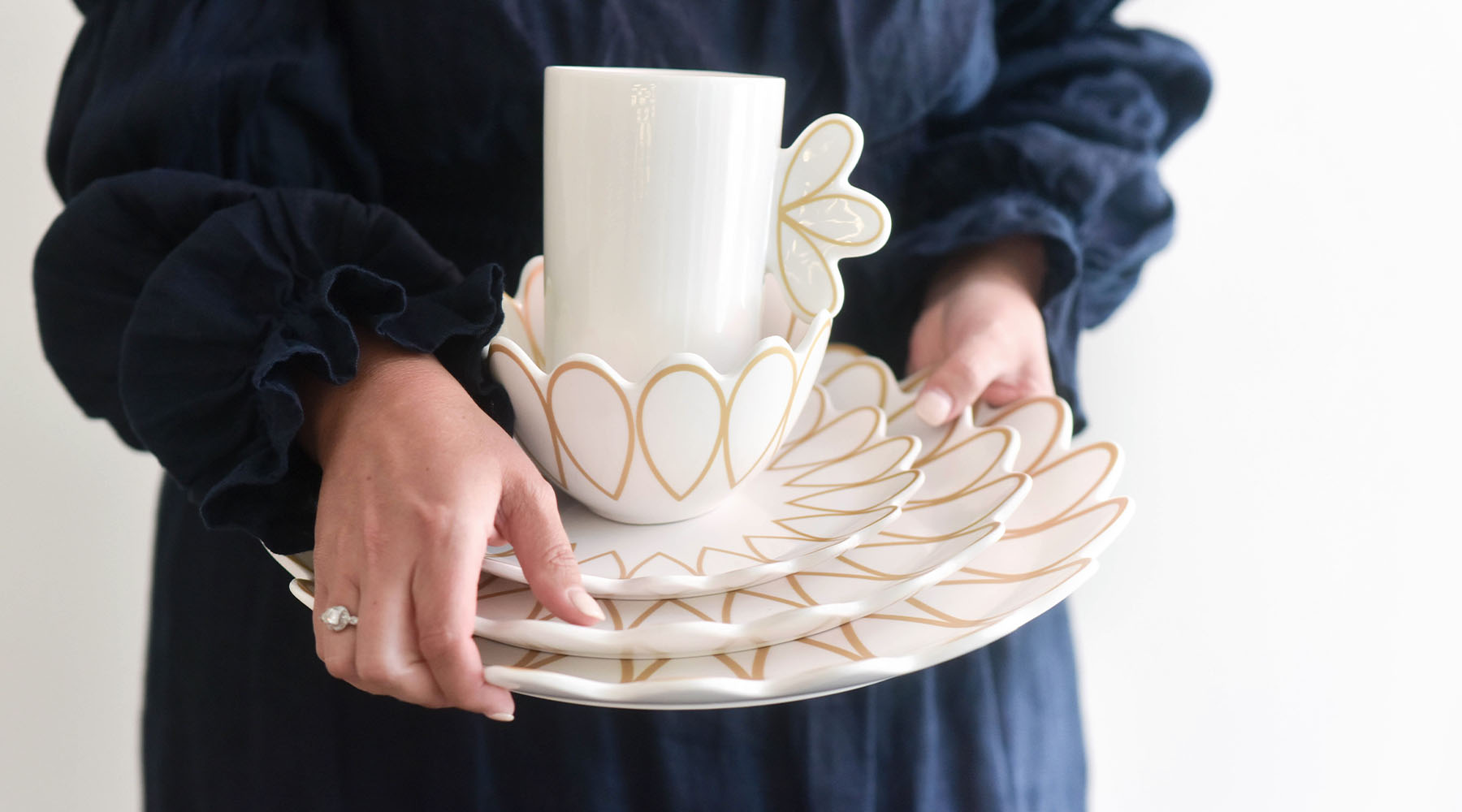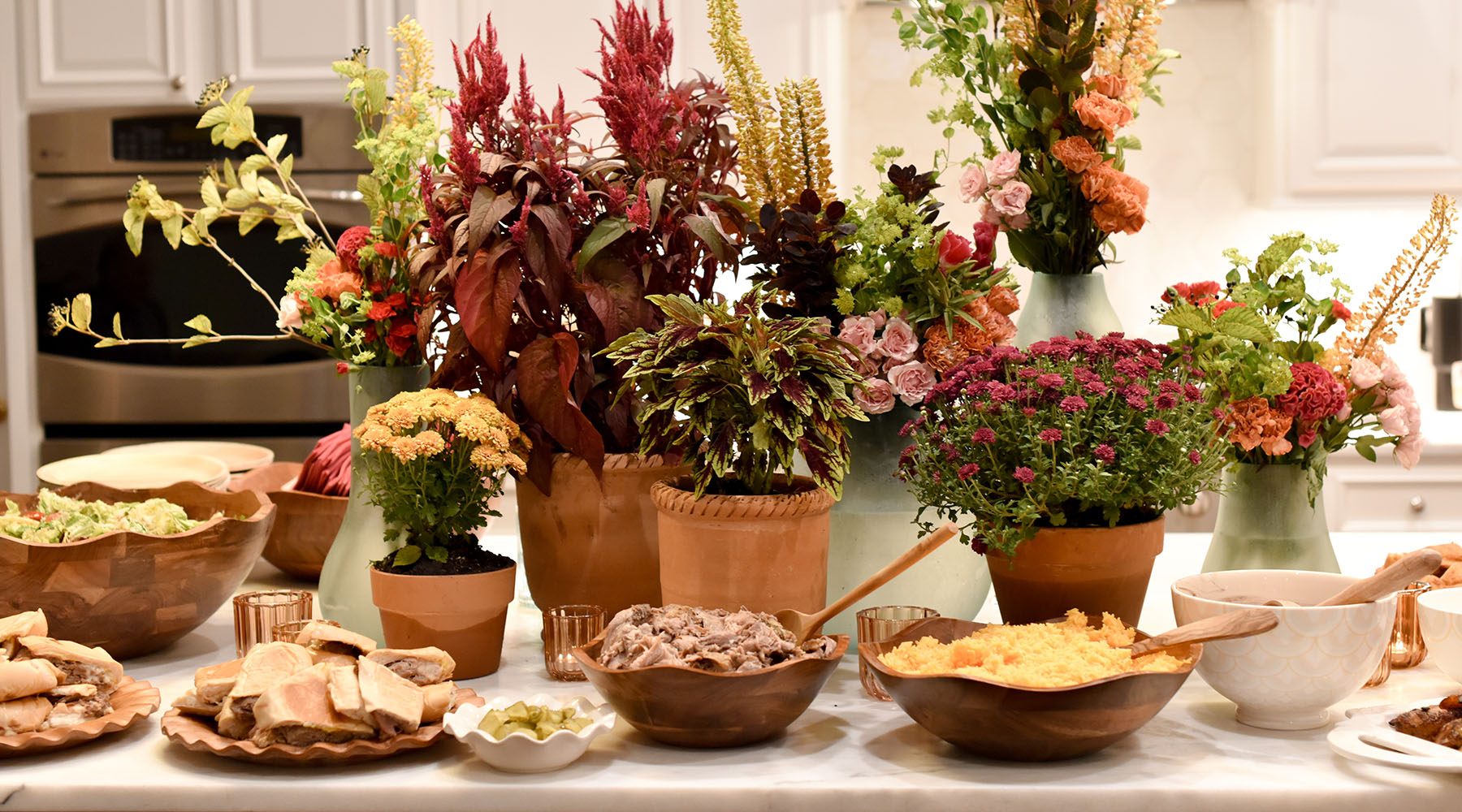
Our Guide to Hosting a Plated Dinner
Send the invites and pop the bubbly — it's time to host a plated dinner! Whether planning an intimate dinner party or gathering friends and family for your romantic wedding reception, setting a plated dinner table brings a touch of sophistication to any gathering.
From stylish dinner plate sets to curating an unforgettable menu, hosting a plated dinner involves a few essential steps. But don’t worry, with our guidance, you'll learn all there is to know about designing beautiful place settings, understand what makes a plated dinner so special, and find delicious inspiration for your gatherings.
What is a Plated Dinner?
Plated dinners use a formal serving style where guests remain seated for the entire gathering while each course is brought straight to their place setting. Generally reserved for special occasions, holidays, or momentous milestones, plated dinners are typically served with a formal serving and table setting style.
Why We Love a Plated Dinner
When it comes to celebrations, big or small, nothing feels better than gathering our friends and family around a table to share the moment. While many of our curated gatherings use casual place settings and family-style serving, special occasions call for an equally special table setting—hence, the plated dinner! Between matching dish sets and beautiful centerpieces, hosting a plated dinner instantly elevates any event.
Plated dinners give us a chance to put our hosting skills to the test. Between selecting table linens for the place settings, mixing and matching dish sets, and perfecting the menu, every detail you decide on for a formal dinner helps make your guests feel welcome and special. And who doesn't want to dress up and show off at times? Give your loved ones a reason to dress to the nines, enjoy tasty recipes, and linger around the table as they celebrate.
When to Choose a Plated Dinner
We love hosting plated dinners for all types of occasions, and from retirement parties to engagement celebrations, there are endless reasons to gather our loved ones together in a more formal, sit-down fashion. Understanding the purpose of your dinner can help you choose whether it should be plated, and choosing a serving style is usually the first step. If you're hosting a sit-down bachelorette dinner, it's best to make it more sophisticated with formal dish sets and a plated dinner. But, if you're gathering with friends and family for a casual yet elevated beach party, a more laid-back dinner may be better suited.
It’s also important to consider the type of food you intend to serve. Certain handheld dishes, like hamburgers or tacos, fit in with laid-back events, while others, like Thanksgiving turkey or pasta, work well with a seated meal. Creating a menu early on can help you decide if a plated dinner is best suited. If your menu feels more formal or could involve multiple types of dish sets per place setting, aim for a plated gathering.

As you plan a gathering, it's important to be transparent with how much time you can allot to the setup and lead-up. While hosting a casual gathering eliminates prep time and effort, a formal gathering typically requires more planning and preparation. So, if you have the time to spare, collect a dinner plate set and invite your loved ones!
Perfect Occasions for Plated Dinners
- Rehearsal dinners
- Anniversaries
- New baby announcements
- Formal dinner parties
- Retirement parties
- Bridal showers
- Birthdays
5 Steps to Hosting a Plated Dinner
Understanding the steps to hosting plated dinners can help give you an accurate timeline for preparation, which helps the event go off without a hitch. From sending out invites to choosing dish sets for each formal place setting, there are five simple steps to follow for a plated dinner:
Step 1: Sending Invitations
First and foremost—you have to invite your guests! Friends or family members - or a mix of both (the more, the merrier!), co-workers, or acquaintances can all attend a plated dinner. Once you decide on a date, invitations should be sent at least 3-4 weeks before the event to give you and your guests plenty of time to prepare.
The way you invite guests to your plated dinner depends on the occasion. If you're celebrating a significant birthday at your plated dinner, a paper invite sent via the mail at least a month before the dinner is best suited. If you're gathering friends for a fun but formal dinner party, individual emails or text messages to each guest should suffice.
Do Plated Dinners Need a Dress Code?
While it’s not always a requirement, adding a dress code to your invitation can help bring the celebration together. From black-tie for weddings to cocktail attire for dinner parties, requesting your guests wear a certain style of outfit can help you curate the overall look of your gathering. On the invitation, make a note of what you’d appreciate them wearing so they have plenty of time to search their closets.
Step 2: Choosing a Serving Style
While there's a time and place for buffet tables and family-style serving, sometimes you need something extra special. In a plated style, the host brings each course to the table on individual dish sets. Rather than leaving serving platters on the dining table, every recipe will be stored in a separate serving area (typically the kitchen). Your guests won't have to lift a finger as they eat each course from a fresh plate or bowl.
Depending on the occasion, you may hire outside help to serve during the meal. No one wants to miss out on the intimate moments during wedding receptions or dinner parties, so why not hire waitstaff to bring out your dinner sets instead? Sit back, enjoy your time with your guests, and host your evening hands-off!
Step 3: Finalizing the Menu
Almost all of our cherished formal gatherings center around the menu, and with plated dinners, every course must be carefully selected in advance. Formal gatherings will often include at least three courses, with an appetizer, main course, and dessert (but nothing’s stopping you from adding more). As you curate your menu, it's important to ensure all of your courses pair well together, complementing flavors and mixing different textures and tastes for your guests.
The reason for your event can often inspire the dishes included on your menu. Certain holidays demand the same beloved family recipes. If you're hosting a party in someone's honor, taking their tastes into consideration is a perfect way to personalize the experience. Even if you're throwing a plated dinner "just because," you can feature seasonal ingredients in that menu!

Pro tip: As you plan your menu, make sure you choose the right serveware and dish sets for each dish to ensure you have the ability to cook the complete menu. You wouldn't want the event day to come around and find out you don't have enough casserole dishes for your recipes!
Plated Dinner Menu Inspiration
We've planned countless formal dinners, and whether you're looking for inspiration for a complete menu or ideas for a side dish, we've gathered a few of our favorite options for you to consider adding to your plated menu.
Starters:
Sides:
Main:
Dessert
Your place setting will differ depending on what type of dessert you serve. Certain recipes correlate to specific dish sets better, like ice cream in a bowl or baked goods on a small plate. As you create this section of your menu, keep in mind how these desserts will affect your plate setting:
Drinks
It's important to create a drink menu that can accommodate everyone. You can include wine options and signature cocktails while providing nonalcoholic options, such as sparkling water, seltzers, and juice (if kids attend). Giving your guest a wide range of options means that everyone will have something to enjoy during the plated dinner:
Step 4: Choosing Dinnerware for Place Settings
After deciding on the menu, you can choose the dinnerware collections. With no serving dishes on the table, place settings become the star of the show, setting the tone for your plated dinner and the style and design of your tablescape. Just remember that every course must be served on its plate or bowl, so whether you're using a complete dish set or mixing and matching, ensure you have enough to complete a table setting.
Everything, from the presentation of your recipes to the overall aesthetic of the gathering, depends on the styling of your place settings. Play with colors, textures, and styles of dinnerware to create a unique and unforgettable plate setting for your guests to enjoy.
Wood dinner plates can bring a rustic feel to your tablescape, while something with a gold accent, like the Deco Gold dinner plate set, brings a touch of sophistication. Experiment with using items from a single dish set for a cohesive look or mix and match to your heart's content for a one-of-a-kind place setting.
Essential Dinnerware for a Plated Dinner
Designing plated place settings is simple when you begin to curate your dinnerware collection. Which dish sets you use will rely on what recipes you serve, so it's best to have different bowls and plates on hand. Stock up on these dinnerware items as you create your formal plate setting:
- Dinner plates
- Salad plates
- Bowls
- Flatware—we love Sabre!
- Table linens—Napkins and placemats are the key to personalizing a place setting, whether you’re looking to go bright and colorful or timeless and subdued.
Step 5: Setting Up the Table
At a plated event, everything takes place around the table. When you utilize your favorite dish sets and table linens, you can create a beautiful scene each time. Every guest needs their spot at the table with a formal place setting, but you can leave serveware off the table and in the kitchen.
We recommend setting the dish sets at the table the night before your plated dinner if possible. With so much to do the day of an event, why not get a head start with the place settings? We're all about having extra time with our loved ones, and having the table set before they arrive gives us even more of it!
About ten minutes before guests arrive, fill water glasses and set out bread baskets and any appetizers that don't require being warmed, chilled, or hot.
Place a pitcher or two, like our Signature White Ruffle Pitcher or Iris Blue Pitcher, around the dish sets where it's convenient for guests to pour for themselves as they arrive. Anything that can be set ahead of time should be, from salt and pepper shakers to wine glasses.
How to Set a Formal Place Setting
With so many dish sets and courses to serve, setting formal place settings can feel daunting. Start by looking at your menu to decide what dish best serves each recipe. Then, start with a charger plate or dinner plate as a base. Small plates for certain courses will go next, with bowls on top of that.
Any glassware will go above the dinner set. As each course finishes, that dinnerware will be cleared away, leaving the next dish to be used.
Don't forget to include multiple utensils! Every course needs a new fork or spoon, with forks on the plates' right-hand side and knives on the left. Spoons (if necessary) will go on the outside of the forks. When you set your table, remember to set the utensils in order of use, starting with the first course utensils on the outside so guests can work their way in with each new dish.
How Long Should a Plated Dinner Take?
You'll want to give your guests enough time to properly enjoy each course and each other's company, so don't rush anything. On average, a three-course meal can take about two hours to serve and eat. If you have more courses, allot more time on the schedule.
With a few easy steps, anyone can host a plated dinner. From designing memorable place settings to choosing delicious dishes, elevate your next celebration by making it a plated affair. Just don't forget the most important step— to enjoy your beautiful meal surrounded by your loved ones!














Leave a comment
This site is protected by hCaptcha and the hCaptcha Privacy Policy and Terms of Service apply.